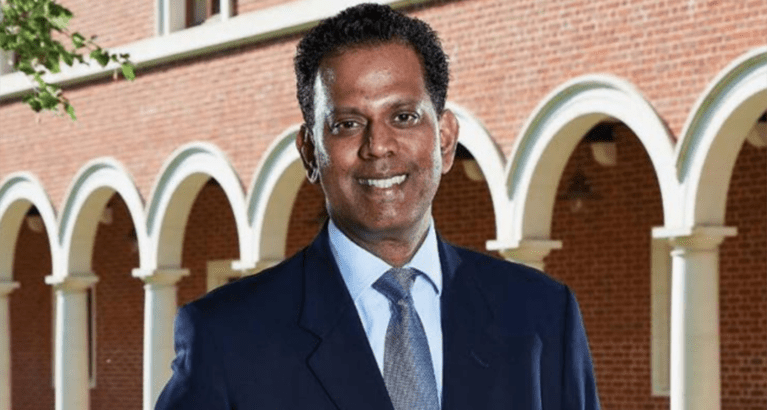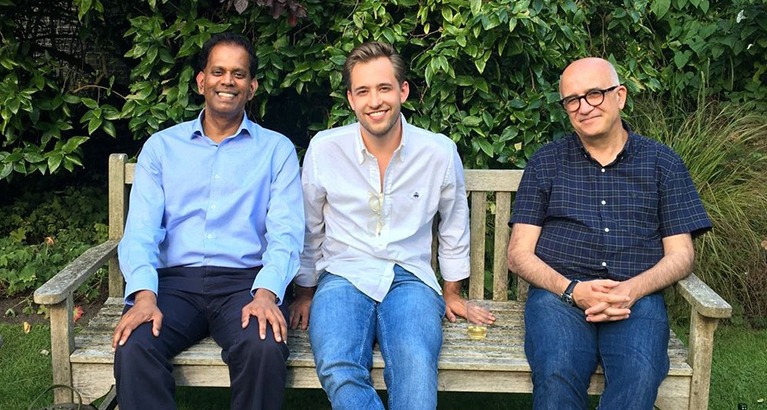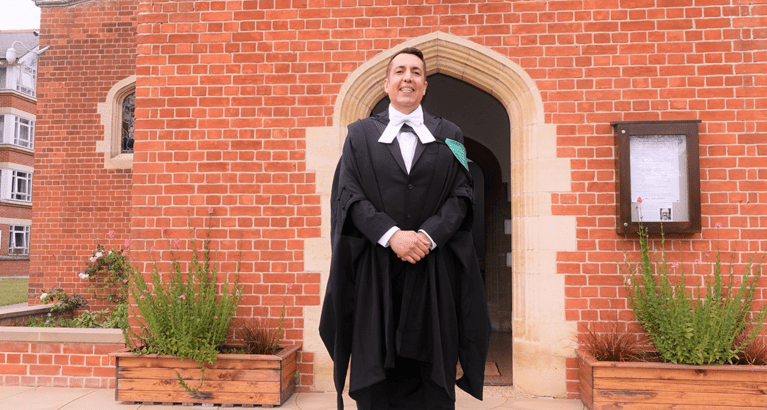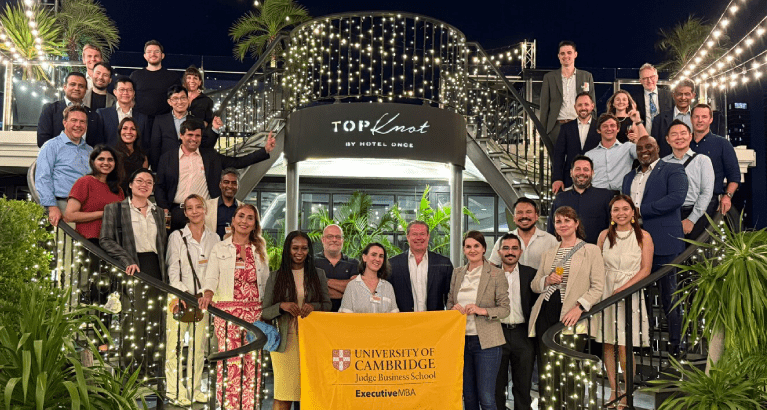Cambridge has long been a knowledge mecca in which collaboration across the community’s ecosystem creates important insight – and that now includes a partnership born in an Executive MBA (EMBA) class at Cambridge Judge Business School.
A decade of collaboration leading to scientific insights

While attending an EMBA class on Business Model Innovation a decade ago, Antonio (“Toni”) Vidal-Puig (EMBA 2013) wrote a paper for his EMBA Individual Project about the strategy of the Laboratory of Molecular Biology (LMB) at the University of Cambridge, which has an enviable record of breakthrough scientific discoveries and a string of Nobel prizes.
That elective EMBA class was taught by Chander Velu, a Professor at the Institute of Manufacturing (IfM) at the University’s Engineering Department. Chander’s course introduced Toni, a Professor at the University’s Medical School, to the broader concept of innovation in business models, which resonated deeply with Toni’s experiences in the life sciences research and academic sectors.
How the LMB became a hub for Nobel recognition
The EMBA paper by Toni has now evolved into an article in the prestigious journal Nature entitled “The strategy behind one of the most successful labs in the world”.
The article, co-authored by Toni, Chander and Luka Gebel, a PhD student at King’s College London Business School (currently Assistant Professor in Strategy and Entrepreneurship, Global Business School for Health, University College London), outlines how researchers at the LMB, founded in the 1940s from the Cavendish Laboratory in the University of Cambridge’s Physics Department, have discovered (among other things) the structure of DNA and proteins, ribosomes and the evolution of antibodies. 12 LMB scientists have been awarded Nobel prizes in recognition for their breakthroughs – including DNA pioneers James Watson, Francis Crick and Fred Sanger.
Multidisciplinary collaboration: a key to discovery
“None of these discoveries was serendipitous,” says the article in Nature. “The lab is organised in a way that increases the likelihood of discoveries.”
Likewise, it was a willingness to explore the possibilities of interdisciplinary and seemingly unrelated areas that made the collaboration involving Toni and Chander possible.
“Academics are often trained with methods from a particular discipline and continue to conduct their research within their own discipline,” says Chander, Professor of Innovation and Economics and Head of the Business Model Innovation Research Group at the IfM. “However, a programme such as the EMBA allows both students and faculty members to explore new areas that intersect across disciplinary boundaries.”
Adds Toni, who is Professor of Molecular Nutrition and Metabolism and Director of the Cardiometabolic Programme at the Heart and Lung Research Institute: “What makes this collaboration unique is that it bridges two fields – business model innovation and academic biomedical research – that traditionally don’t intersect. The EMBA programme played a crucial role in bringing these disciplines closer together, encouraging a dialogue that might not have occurred otherwise.”
Years of discussion led to the Nature article

Following Toni’s EMBA graduation in 2015, he and Chander continued their discussion for several years – with both of them enthusiastic to learn more about the intersection of innovation management and basic bioscience research.
The Nature article about the LMB is unique in this multidisciplinary approach. Previous analyses of similar institutions were typically authored by renowned scientists who had deep expertise in their research fields, combined with management experience acquired on the job. In contrast, the paper by Toni Chander and Luka integrates insights from both science and management, allowing for non-biased and in-depth analysis.
When they first proposed the idea, it was received enthusiastically by some senior scientists with leadership roles, who held a belief that scientific discovery is not purely a serendipitous process and there is a role for strategy and management, but the evidence for this was mostly anecdotal.
The Nature article was supported by substantial evidence from the LMB archives and interviews with scientists, adding scientific rigour to its conclusions, which identified the LMB’s management model as the key to the lab’s success.
How a culture of incentives pushes scientific boundaries
“It sets a culture with incentives and provides oversight to optimise the interplay between science and technology. By integrating high-risk basic science with innovative technology, the LMB facilitates a knowledge feedback loop that helps the institute to identify promising questions and continuously push scientific boundaries,” the researchers say. “In the context of economics and management theory, the LMB behaves as a ‘complex adaptive system’.”
Toni, Chander and Luka believe the paper will be helpful for the scientific research community, funding organisations and policymakers, enabling them to better understand the importance of strategy and management in contributing to the success of a leading research institution such as the LMB.
Lessons for the broader scientific community
These other entities should consider a “similarly holistic and coherent approach to managing basic scientific research”, the authors say. “In short, they should prioritise long-term scientific goals and effectively manage scarce resources; foster economies of scale and scope by promoting complementarities between different areas of scientific research; and create value by establishing synergies and feedback between scientific questions and engineering-based technology solutions.”
In doing so, 3 challenges will need to be overcome: the need for “ever more sophisticated and expensive equipment” in tackling the increasingly complex issues in biosciences, which might be beyond the resources of a single lab; pressure on labs to quickly transition into clinical applications, which “risks undermining the quality and competitive edge of their fundamental research”; and the difficulty of recruiting the “best scientific minds” for basic science labs given higher salaries paid by private-sector pharma and biotech firms.
How an EMBA helps those in leadership positions
The EMBA was truly transformational for me, and I only regret not having pursued it earlier in my career.
As reflected in Toni’s career, an EMBA can be immensely beneficial for those in leadership positions seeking to complement their expertise with evidence-based, tested knowledge.
Toni was already well established in his career when he enrolled on the EMBA programme. He comments: “The EMBA was truly transformational for me, and I only regret not having pursued it earlier in my career. The skills and insights gained from the EMBA are invaluable for principal investigators, institute directors, senior academics, and junior PIs (principal investigators) from academic and non-academic institutions.”
He continues: “The EMBA equips researchers and academics with tools that go beyond traditional research methodologies. It enhances their ability to analyse and choose research topics, strategise their positioning, and develop competitive advantages. It also sharpens their approach to collaborative competitiveness, funding acquisition, and people management. Additionally, it provides strategies for increasing visibility, creating value, raising awareness, and forming impactful partnerships.”
The transformative power of lifelong learning
The EMBA isn’t about leaving academia – it’s about making our research better and more competitive.
A well-established career should never deter anyone from seeking new learning opportunities and personal growth, says Toni, who vividly remembers when a senior academic asked him if the EMBA meant he was planning to leave academia. His response then, as it is now, was clear: “The EMBA isn’t about leaving academia – it’s about making our research better and more competitive. The skills acquired through the EMBA enable us to elevate our research, adapt to a rapidly changing environment, and ensure that we remain at the forefront of innovation.”
Toni believes that an EMBA should not be viewed merely as a passport to a higher salary; the real value comes from a genuine curiosity about the topics covered. Many researchers become deeply specialised in their fields, often narrowing their focus over time. For Toni, the EMBA was like an intensive and comprehensive course that reconnected him with a broad spectrum of knowledge while also enhancing his social and entrepreneurial skills. These skills are highly transferable across different domains, making the experience valuable not just professionally but in various aspects of life.
Related content
Gebel, L., Velu, C. and Vidal-Puig, A. (2024) “The strategy behind one of the most successful labs in the world.” Nature
Group photo credit: Sriya Iyer





